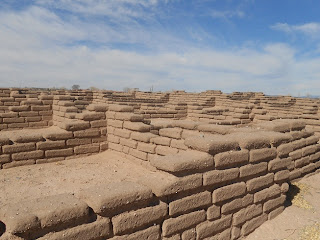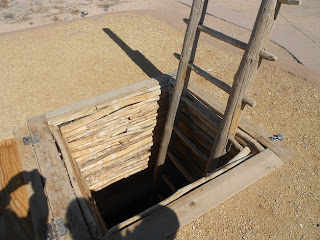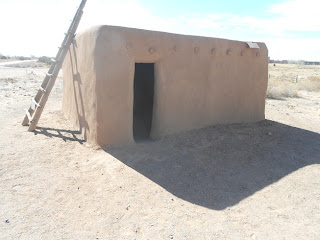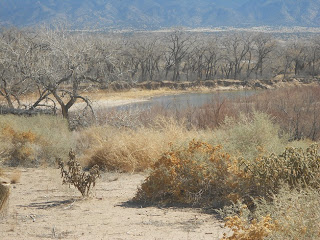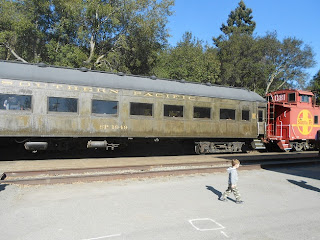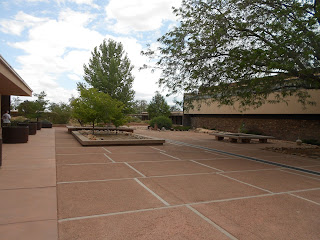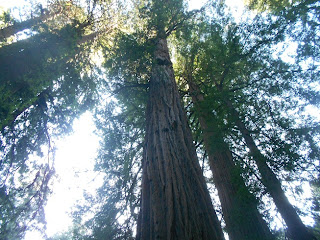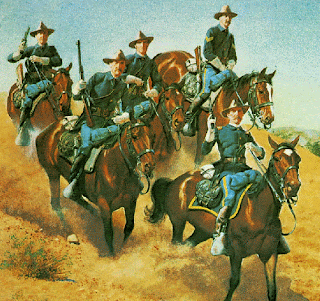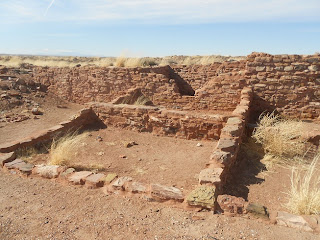 |
| Homolovi I Ruins |
Homolovi Ruins Excavation
A 1985 to 1987 survey of about 13 square miles in the Homolovi Ruins State Park has documented more than 300 prehistoric sites. The survey shows a higher site density than was expected and indicates the long term use of the middle Little Colorado River Valley. After a long time in acquiring the land and completing the improvements, the Homolovi Park was dedicated and officially opened to the public on May 22, 1993.
 |
| View from Homolovi Visitor Center |
Ancient Pot Shards
The great ruins of Homolovi is covered with pot sherds just about everywhere. Fortunately for all of us the pot sherds for the most part have been left undisturbed by the visitors. You'll find them spread around the ground and in many instances placed on display on top of a flat rock. A major reason the park was created in the 1980's was to help protect the ruins and pot shards which were often vandalized.
 |
| Pot shards, Homolovi Ruins State Park |
Homolovi Ruins State Park consists of four major pueblo sites, and as mentioned above inhabited by the Anasazi peoples sometime after 6000 B.C. and continuously between 1200 and 1425 A.D. The ruins are spread throughout the 340-acre park. On our Western Trips visit to the Homolovi Ruins State Park two of the ruins sites were opened for visitors. These were Homolovi ruins I and II.
Homolovi I
Homolovi I has a short loop trial going through the ruins. Most of these ruins are covered with soil to a large extent. There is a campground on the way to the ancient Homolovi I Ruins. The Homolovi I parking lot is located about one mile past the park campground and is next to the Little Colorado River.
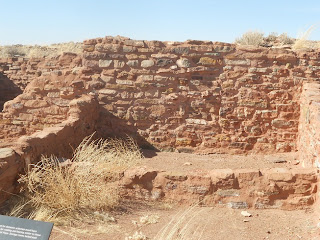 |
| Kiva ruins, Homolovi II |
The trail at Homolovi II is also relatively short. This one is paved and should be wheelchair accessible. Homolovi II was a 1200 room village that at its peak housed 750 to 1000 people.
Homolovi Ruins State Park is located fifty-five miles east of Flagstaff and just north of Winslow. Arizona's Homolovi Ruins State Park has campsites, picnic areas and several excellent hiking trails. The park offers 52 RV sites and all except eight sites have electric hook ups. The Rv sites can accommodate vehicles up to 83 feet long.
There are
around 52 RV sites and all but 8 sites have electric hookups. - See more
at:
http://www.thatsnotcamping.com/rv-camping-2/homolovi-state-park.html#sthash.Shd4E9l5.dpuf
There are
around 52 RV sites and all but 8 sites have electric hookups. - See more
at:
http://www.thatsnotcamping.com/rv-camping-2/homolovi-state-park.html#sthash.Shd4E9l5.dpuf
There are
around 52 RV sites and all but 8 sites have electric hookups. - See more
at:
http://www.thatsnotcamping.com/rv-camping-2/homolovi-state-park.html#sthash.Shd4E9l5.dpuf
Links to two additional Western Trips photo articles you'll enjoy are the Puye Cliff Dwellings located a short drive north of Santa Fe New Mexico and the Mesa Verde National Park cave dwellings in southwestern Colorado.
The Hopi people of today consider Homolovi, as well as other pre-Columbian sites in the southwest, to be part of their homeland. They continue to make pilgrimages to these sites, renewing the ties of the people with the land.
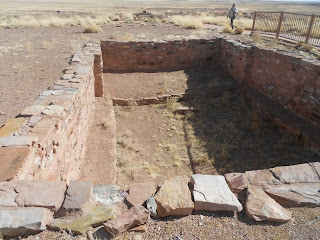 |
| Excavated kiva at Homolovi Ruins State Park |
Getting to the Homolovi Ruins State Park
Homolovi Ruins State Park is located on the north side of Interstate 40 in Winslow Arizona. It is also close to Arizona Hwy 87. Winslow is located about fifty-five miles east of Flagstaff Arizona and about 1oo miles west of the New Mexico state line.
(Photos are from author's private collection)
View Larger Map


